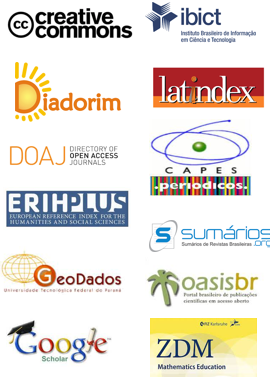How To Learn To Understand Mathematics?
DOI:
https://doi.org/10.17921/2176-5634.2017v10n2p114-122Resumo
The cognitive core process of mathematical activity is the recognition of a same object in two semiotic representations whose respective contents have nothing in common with each other. It is also the recurrent and insuperable difficulty of comprehension in learning mathematics and the main impediment to solving problems for most students. The theory of registers provides a cognitive analysis of the way of working and thinking in mathematics. It highlights the key cognitive factors to be taken into account in Mathematics Education for all students up to the age of 16. To give an insight into the theory this paper focuses on two topics. How to introduce letters and elementary algebra? How to learn to solve problems in mathematics? And to avoid the confusion of words arising in Mathematics Education whenever we talk about « theories », we shallshow how to analyze in terms of registers the mathematical tasks related to these two topics. This allow us to identify the cognitive thresholds to be crossed to understand and to solve problems in mathematics. Analyzing mathematical activity in terms of registers is quite different from the prevailing mathematical view. This concerns the hidden face of mathematical activity and not its exposed face. We are broaching here the crucial issue about teaching mathematics to all students up to the age of 16. What should be its objectives and priority areas?
Keywords: Register. Transformation of Semiotic Representation. Conversion. Treatment. Discursive operation.


